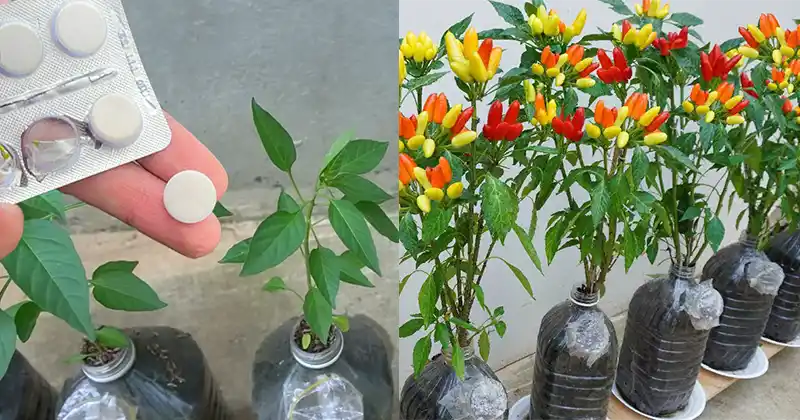Growing chili peppers at home can add a fiery twist to your gardening routine. This comprehensive guide will walk you through the essential steps for successfully cultivating chili peppers in containers, with a unique twist involving vitamin B complex to boost plant vitality.
1. Selecting the Right Variety
Choose chili pepper varieties suited for container gardening. Compact varieties like ‘Thai Hot,’ ‘Jalapeño,’ or ‘Hungarian Wax’ are excellent choices for limited space.
2. Preparing Your Containers
- Container Size: Use containers with a diameter of at least 12 inches and a depth of 12 inches or more. Ensure they have drainage holes to prevent waterlogging.
- Potting Mix: Opt for a high-quality potting mix designed for vegetables. A mix with good drainage and aeration is crucial for healthy root development.
3. Planting Chili Peppers
- Seeds or Seedlings: Start with seeds indoors 8-10 weeks before the last frost or purchase seedlings from a nursery.
- Sowing Seeds: If starting from seeds, sow them ¼ inch deep in seed trays. Keep them in a warm, sunny location or under grow lights.
- Transplanting: Once seedlings are about 3-4 inches tall and have a couple of true leaves, transplant them into your prepared containers.
4. Nutrient-Rich Care
- Watering: Keep the soil consistently moist but not soggy. Water when the top inch of soil feels dry.
- Fertilizing: Use a balanced fertilizer every 2-4 weeks. Once the plants start flowering, switch to a high-potassium fertilizer to encourage fruit development.
5. Enhancing Vitality with Vitamin B Complex
Vitamin B complex can improve plant health and stress resistance. Here’s how to use it:
- Application: Dissolve a vitamin B complex tablet in a gallon of water according to the dosage instructions on the tablet. Use this solution to water your chili plants every 2-3 weeks.
- Benefits: Vitamin B complex can enhance root growth, improve nutrient uptake, and help plants cope with stress.
6. Maintaining Optimal Conditions
- Light: Chili peppers need at least 6-8 hours of direct sunlight daily. Place containers in a sunny spot or use grow lights if growing indoors.
- Temperature: Maintain temperatures between 70-85°F (21-29°C) during the day and 60-70°F (15-21°C) at night. Peppers thrive in warm conditions.
- Pruning: Pinch back the growing tips of your chili pepper plants to encourage bushier growth and more fruit production.
7. Pest and Disease Management
- Pests: Watch out for common pests like aphids, spider mites, and whiteflies. Use insecticidal soap or neem oil to manage infestations.
- Diseases: Prevent fungal diseases by ensuring good air circulation and avoiding overhead watering. Remove and discard any affected plant parts promptly.
8. Harvesting
- Timing: Harvest chili peppers when they reach their full size and color. Most varieties are ready to pick when they turn red, orange, or yellow, depending on the type.
- Method: Use scissors or pruning shears to cut the peppers from the plant, leaving a short stem attached to avoid damaging the plant.
By following these steps and incorporating vitamin B complex into your care routine, you’ll enhance the vitality and productivity of your chili pepper plants. Enjoy the process of growing and harvesting your own spicy, flavorful peppers right from the comfort of your home.
